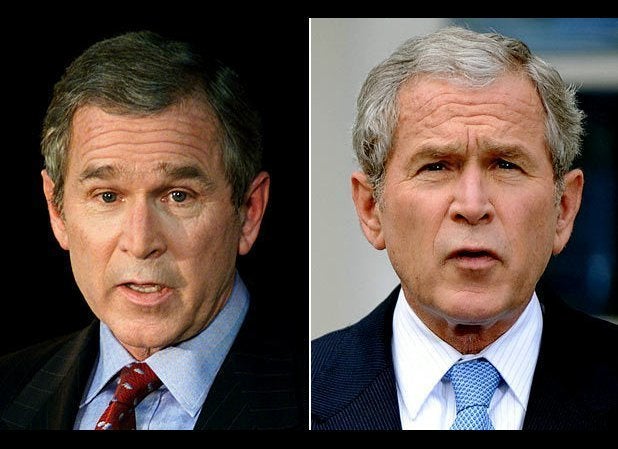After months of campaigning and with primary season nearly at a close, the midterm elections landscape remains decidedly un-gamechanged.
Americans are pessimistic and broadly anti-incumbent, President Barack Obama's ratings are mediocre, and neither party is exactly surging ahead. In short, the situation looks pretty much the same as it did in January.
Voter sentiment in the year's most closely watched Senate races has barely budged since spring. In the 17 Senate races polled often enough to track, the margin between candidates over the past three months has shifted by an average of about 1.7 percentage points. Only one race, Iowa, saw the leading candidate switch, with state Sen. Joni Ernst (R) edging ahead of U.S. Rep. Bruce Braley (D) after the GOP primary.
As FiveThirtyEight's Harry Enten noted last Wednesday, there's even less movement in the races that matter most in deciding control of the Senate. In the nine most competitive Senate races -- for this purpose, those in which neither candidate is leading by more than 5 points in the polls -- the average change is less than 1 point, with the overall movement not strongly in favor of either party.
Opinions look equally stable at the national level, with public confidence still low that the country is on the right track and Americans in both parties still expressing broadly anti-incumbent sentiments.
Despite the GOP's focus on attacking Obamacare, opinions of the law have seemingly stabilized at about 40 percent approval. "I think the cake has been baked on the [Affordable Care Act]," nonpartisan political handicapper Stuart Rothenberg told CNN in April. "I don't think there are a bunch of people changing their opinions now."
Opinions of the president also seem to have settled, along starkly partisan lines: The vast majority of Democrats continue to approve of him, while nearly all Republicans disapprove, and independents hang somewhere in the middle. His approval rating remains about as low as it has ever been during his tenure as president. The occasional headlines proclaiming Obama at an all-time low (usually meaning his numbers have dropped a point or two) obscure the fact that his overall job approval has been mired for months in the mid-to-low 40s. His polling average, which fluctuated considerably in earlier years, now looks more like a straight line:
That lack of change in Obama's ratings seems unlikely to have much bearing on this November's results. But if the pattern holds, it'll be somewhat unusual for a midterm year: According to Gallup tracking data, the president's approval rating dropped 5 points or more between January and Election Day in six of the past eight midterm years. (The exceptions were Ronald Reagan in 1986, whose ratings remained relatively unchanged, and Bill Clinton in 1998, whose numbers actually recovered somewhat.)
Numbers on which party Americans would prefer to send to Congress often vary significantly from pollster to pollster, but the average result has also moved relatively little this year. By this point in 2010, Republicans were already beginning to significantly widen their lead, with an end-of-August Gallup poll giving them a record 10-point advantage. This year's polling, however, has rarely showed one party with an advantage of more than a few points.
But Democrats face some challenging factors in November: The younger, more diverse voters who make up their base are less likely to vote in midterms, and the president's party typically loses seats in those elections. Combined with the polling results, that suggests the status quo still holds: The GOP has an edge, but not quite wave-like enthusiasm behind it.

